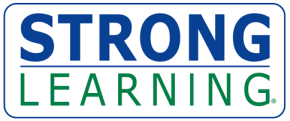Alphabet Phonics
Dear Dr. Linda,
Our son Guy is in second grade and is still not reading. It’s the second half of the year and I’m really concerned. His teacher told me that he needs a good phonics program that follows Orton-Gillingham. Then I talked to my friend whose daughter has trouble with reading because she has dyslexia, and the school has her in something called the Wilson Program. I went online and bought phonics flash cards. I’ve used them with Guy, but he hasn’t improved one bit. I’m really stressing out because I’m afraid he has dyslexia. I think my husband does. It was just never diagnosed. We’re open to any suggestions.
Thanks, Madison and Matt
Hi Madison and Matt,
In general, if a child is in the second half of second grade and is still not reading, you need to look into it.
There are many reasons that children don’t pick up reading. Many children simply don’t pick it up because they’re not developmentally ready. Many struggle with reading because they have attentional problems and have difficulty staying focused long enough to learn the sounds of the letters—and even the letters in some cases. Still others could be in a reading program that doesn’t align with how they learn, and still others may indeed have dyslexia. Even though dyslexia sounds scary, all it means is that the child isn’t naturally putting the sounds of words and the words themselves together and needs a good phonics program to begin to do that.
Guy’s teacher is giving you good advice. Orton and Gillingham were two physicians back in the 1940s who discovered that children who struggled to learn to read needed to learn explicitly and systematically to decode words using the phonics patterns of our speech. The Wilson Program you heard about and a multitude of other programs is simply a phonics program that follows the Orton-Gillingham approach. The Strong Learning system I use in my own practice follows the Orton-Gillingham approach, too.
Some of the programs are better than others, however, because they’re more engaging for children, especially ones who are struggling. Engaged children learn.
If Guy doesn’t have dyslexia, the phonics approach is still beneficial. Knowing phonics gives readers the tools to read. Most people pick up phonics naturally, but there are many, including those with dyslexia, who need to learn it in a sequential method. It’s been shown over and over again that learning phonics is an effective way to teach beginning readers. But just buying phonics flash cards won’t help unless you know something about the process.
Also, be sure that your son knows the alphabet well. Even though we assume that every child knows the letters in the alphabet, many in the second grade who are still struggling with reading didn’t learn to recognize them all. Once Guy can identify each letter and learn the sound(s) each makes, he’ll have the tools to begin to decode words. Once he can decode words, he’ll start building a vocabulary. Once his vocabulary is strong, he’ll be able to comprehend what he’s reading. That’s what reading is…making sense out of the words that the reader has decoded!
And be patient. If Guy is struggling with reading, he’ll need time to learn how to read. It will take time until it becomes automatic and that’s okay. Your goal is to help him read, no matter how long it takes, and if he feels pressure from you or senses your concern, anxiety over pleasing you could delay him even more.
Want to know more about the Orton-Gillingham method? Feel free to contact me through the Strong Learning website below.
Dr. Linda
Dr. Linda Silbert has a weekly Education Q&A column in Mahopac News and 4 other Halston Media newspapers. Submit questions using the contact form at www.StrongLearning.com
